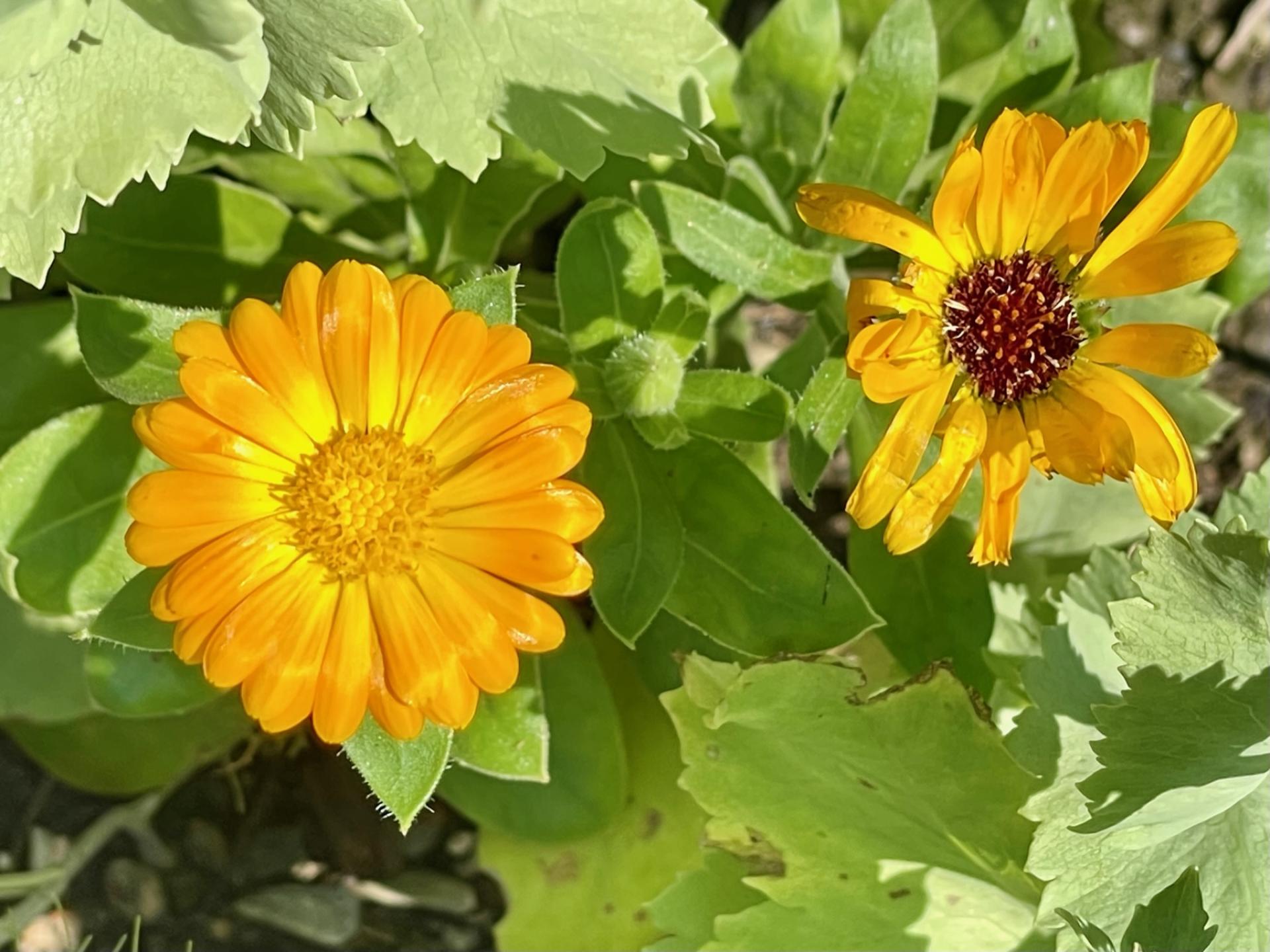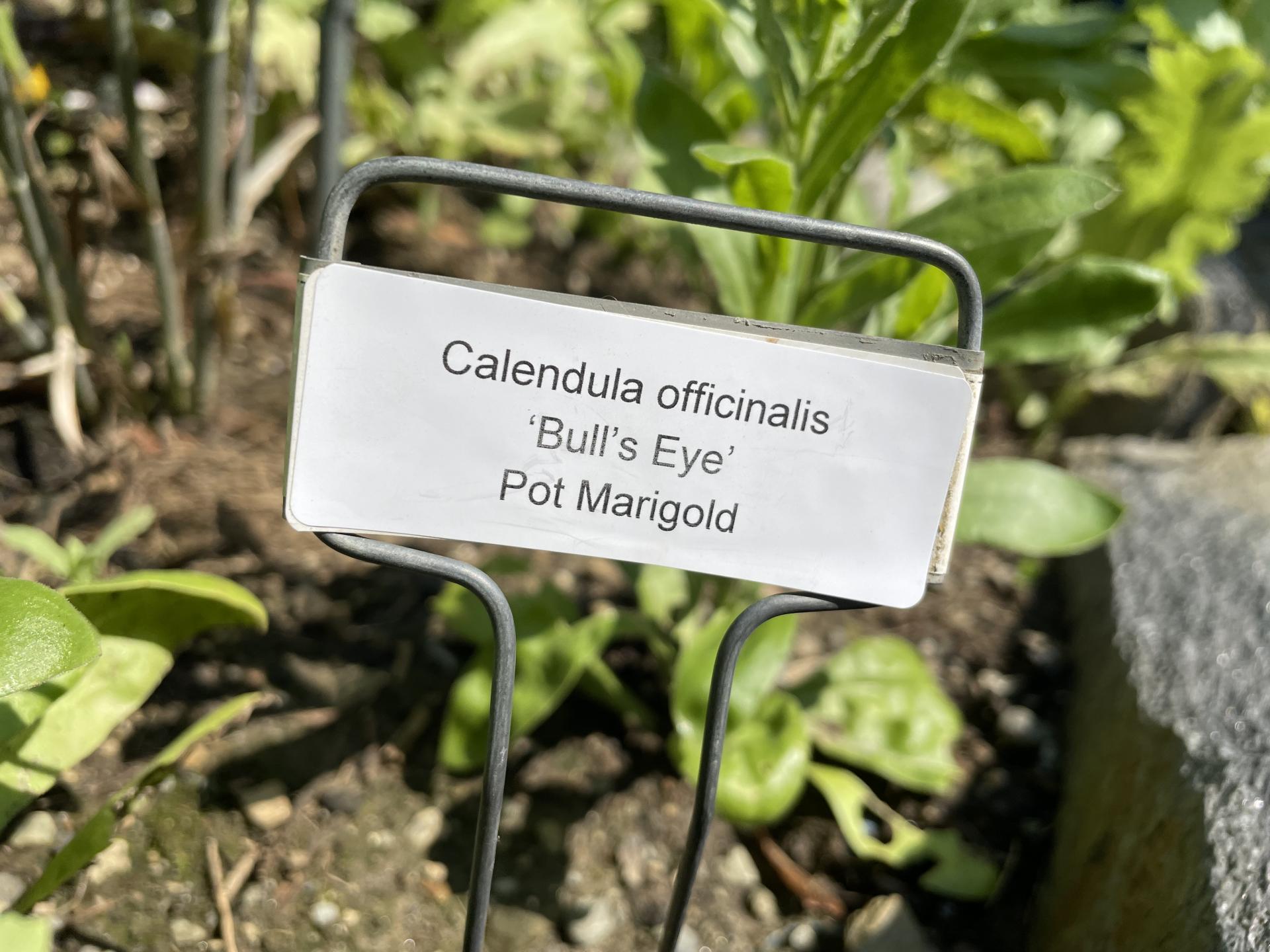You are here
Herb of the Week is Calendula officinalis (Pot Marigold). Also, What's New in the Kitchen?
Herb of the Week is Calendula officinalis (Pot Marigold). Also, What's New in the Kitchen?
By Barbara Smith
Herb of the Week: Calendula officinalis (Pot Marigold)
Lore has it that calendula’s beauty inspired many poems, so the English gave it the name “poet marigold,” which was shortened to “pot marigold” over time. An alternative suggestion is that, because this herb’s petals were so often added to the “pot” of soup or stew, the flower took on the name “pot marigold.” This cheerful herb is blooming currently in Berkshire Botanical Garden's Herb Display Garden (near the Center House). Native to the Canary Islands, southern and central Europe and north Africa, calendula likely made its way to the United States with European settlers. The genus Calendula includes about 20 species, but only “officinalis” is used in the kitchen or in medicine. Calendula should not be confused with the garden flower “marigold” (Tagetes spp.), the flowers of which are considered to be inedible.
This decorative annual grows 1to 2 feet tall with flat, round, many-petalled yellow or orange flowers, much prized for their color. Calendula can be readily grown from seed once the danger of frost has passed; it will self-sow afterwards. It prefers a sunny spot with well-drained soil conditions.
To preserve the flowers, cut them when fully open and separate the petals to dry in a shady place. Once dried and ground, the petal powder can substitute for saffron, so it has been used to provide color (as in butter, cheese and soups) or to impart a subtle flavor to stews or poultry. Calendula petals also yield a dye that has been used for fabric or hair.
During the United States Civil War, the flowers of this versatile herb were used to stop bleeding and promote healing of battle wounds. British garden designer Gertrude Jekyll led a campaign during World War I to raise calendula to supply British hospitals in France (Herb Society of America). Traditionally, calendula has been used to treat skin irritations; its antifungal, anti-inflammatory properties make a healing treatment for the skin. A popular salve can be made using calendula oil, beeswax, drops of lavender oil and a pinch of turmeric (See, Rosemary Gladstar, “Medicinal Herbs: A Beginner’s Guide”).
Come see these beautiful flowers in the BBG Display Herb Garden!
Herb Garden — Kitchen Update
Herb Associates Kitchen Crew Coordinator Theresa Terry reports a busy work session produced a favorite with visitors and return customers — Fresh Tomato Basil Dressing. The Herb Production Garden has plentiful tarragon, so Fresh Tarragon Dressing was also made, and some tarragon set aside to make mustard at a later date. Blackberries and strawberries are soaking in apple cider vinegar in anticipation of making two new shrub flavors next week. (If you missed last week’s column, shrubs are a refreshing flavoring to add to summertime chilled drinks such as lemonade or club soda, or even your cocktail of choice.) And that’s not all! With lavender flowers currently in season, the kitchen team made fig with lavender jam, lavender jelly and lavender simple syrup. Drop by the BBG Gift Shop and get yourself some of the wonderful products prepared by the Herb Associates each week.
The Berkshire Botanical Garden’s Herb Associates began in 1957 and have been making and selling products for the benefit of BBG ever since. At BBG, the Herb Associates oversee a display garden and production garden, both located near the Center House. Members/volunteers meet every Tuesday morning during the late spring through mid-autumn each year, coinciding when the gardens themselves are open to the public. Members plant, weed and tend the gardens, as well as harvest and process the variety of herbs.
Help Our Garden Grow!
Your donation helps us to educate and inspire visitors of all ages on the art and science of gardening and the preservation of our environment.
All Donations are 100 percent tax deductible.





